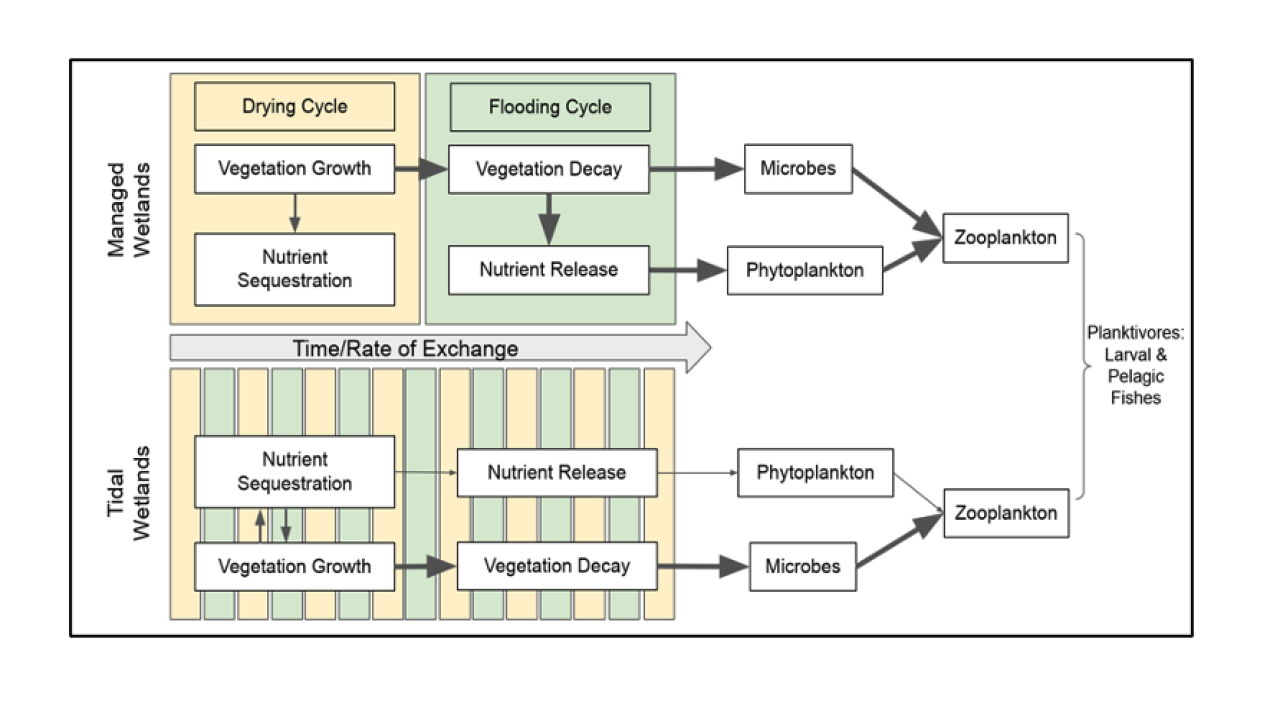
Prop 1 and more: Reconciling impounded managed wetlands and estuarine conservation goals in Suisun Marsh
PI: John Durand, UC Davis
Co-PIs: Jake Sousa, ICF
Alice Tung, UC Davis
Kyle Phillips, UC Davis
UC Davis Center for Watershed Sciences has received Prop 1 and other state grants to study the contribution of historically managed wetlands to ecosystem functioning in Suisun Marsh. Tidal wetlands in the San Francisco Estuary are valued for many biological, recreational, and economic services, especially because over natural 95% of wetlands in the system have been lost. In Suisun Marsh, there are over 50,000 acres of impounded managed wetlands that have been used historically for conservation and recreational hunting of waterfowl. Some managed wetlands are being targeted for tidal restoration to bring back shallow tidal habitats for imperiled native fishes.
In recent decades, the San Francisco Estuary had a substantial decline in plankton and several native pelagic fish species. Suisun Marsh has become regarded as a key nursery for these imperiled species, though the understanding of its function is incomplete. Until recently, managed wetlands have been dismissed as a key contributor to aquatic food webs, but emerging research from the Center for Watershed Sciences indicates that they are powerhouses of food production for fishes and other taxa, including western pond turtles, salt marsh harvest mouse, and other species. Based on these findings, it is likely that operations in managed wetlands could be optimized to promote imperiled fishes including outmigrating Chinook Salmon, Smelt, and Striped Bass.
The study will focus on plankton production and fish responses within managed ponds and adjacent sloughs under different management schemes, in an effort to 1) demonstrate the importance of historic working landscapes to marsh habitat; and 2) provide clear management guidance to optimize aquatic food production for both fishes and waterfowl. Stay tuned for exciting new updates!

Plot showing the difference in Chlorophyll-a concentration among flooded ponds and adjacent slough channels. Production can be exceptionally high in the managed wetlands ponds.

Kyle Phillips, PhD student in UCD Graduate Group in Ecology, sampling invertebrates.
